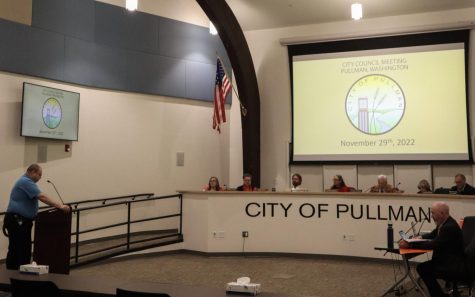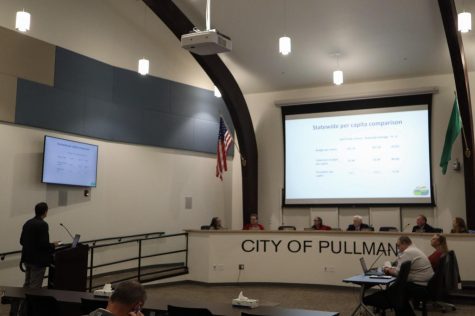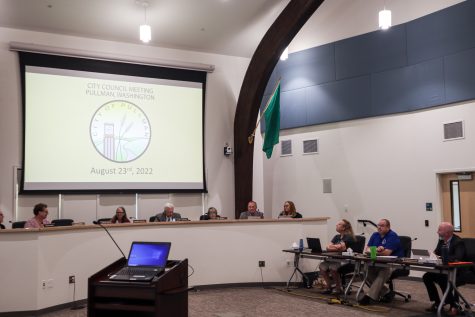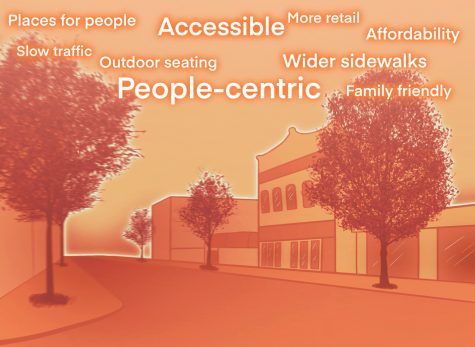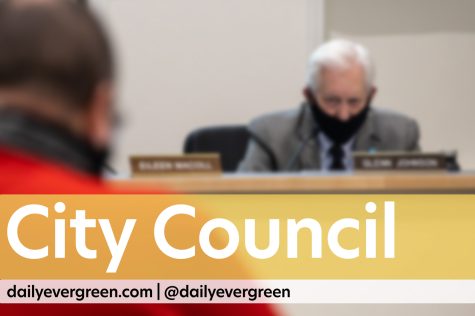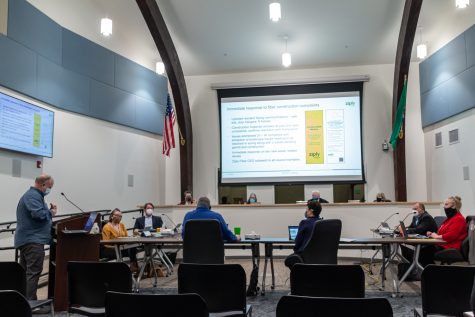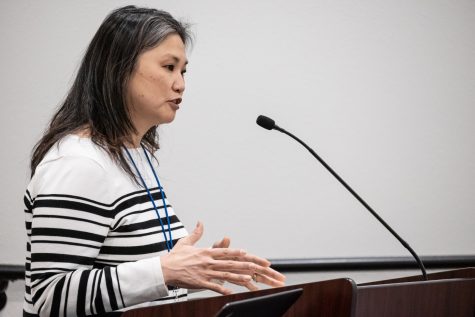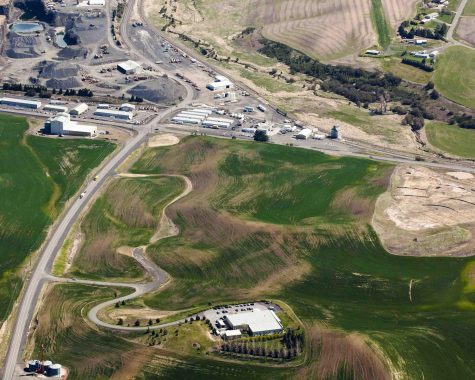Councilmembers approve Kamiak Cottages planned development
Development designates 12 lots for single-family homes; criminal justice presentation suggests implementation of restorative justice
Pullman City Councilmembers approved several building developments, including Kamiak Cottages’ planned development and the planned Paradise Hills subdivision project.
October 21, 2020
The Pullman City Council approved several building developments and heard a presentation on the status of criminal justice in Pullman during its virtual meeting Tuesday night.
Construction in town
The Kamiak Cottages’ planned development, which designates 12 lots for single-family homes on Military Hill, was approved by the council in a vote of 3-2.
The third and fourth phases of the planned Paradise Hills subdivision project were also approved.
The third phase is subdivision No. 10, located northwest of Pullman High School and north of Greyhound Way. It includes 16 building lots on 5.77 acres. The fourth phase is subdivision No. 11 and includes 3.72 acres with 18 building lots, including Kamiak Court along with the Kamiak Cottages planned residential development.
Councilmember Al Sorensen said he was concerned about the traffic disruption caused by more construction, especially so close to schools. Councilmember Eileen Macoll said city documents about these projects should include information about sidewalk changes because residents care about that information.
A discussion about adding a wireless communication facility to the Wawawai water tank was postponed after the council decided to get public comments from residents who live in the area.
“What I want is for the residents that live in a very short distance to this particular water tower to be notified of what they’re going to have in their backyard,” Sorensen said.
Criminal justice in Pullman
Anne Pflug, a researcher at The Other Company, worked with WSU researcher Megan Parks to interview government officials, law enforcement and judicial employees about the status of courts and crime in Pullman.
Pflug said the council could consider adding a municipal court in Pullman, which would cost more but allow the city to have local control of court proceedings. It would require around 4,000 square feet to construct.
“If you wanted a municipal court, you certainly have the space for it,” Pflug said.
Pflug said the analysis showed a lack of online services. She said they recommend phone applications and automated phone services for customer conveniences, collections and response rates for parking/traffic infractions.
Another recommendation is to improve court staff training with use of panic buttons wired to police and the installation of video security monitoring. Pflug said the city could also explore cross-training for backup procedures, joint collections and customer service.
Pflug said law enforcement across the country has trended toward restorative justice rather than using jail and the court system as punishments. This would include domestic violence intervention programs and driving under the influence rehabilitation courses, she said.
“The current judge very much has, in what I can tell from talking to him and watching him in action in the courtroom, has an approach that is very much aligned with restorative justice, but he is limited because of lack of [intervention and treatment] programs,” Pflug said.
The current Pullman justice system falls somewhere between restorative justice and traditional punishment-centered justice, Pflug said.
Most of the city’s criminal justice budget pays for law enforcement, she said.
Pullman is the second-largest user of Whitman County Court, Pflug said. It hears mostly misdemeanor cases; 92 percent of cases heard in the county court are misdemeanors. The top three offenses from 2016-18 were driving under the influence, theft and driving with a suspended license.
Pullman used 3.4 out of 62 full-time beds in the Whitman County jail in 2018, or 1,197 jail days, Pflug said. The majority of jail use occurred after sentencing.
The Washington State Patrol files 58 percent of the court cases and contributes the most court fines and fee revenue to the district court, Pflug said.
Macoll said the council should revisit this data at later discussions because a municipal court in Pullman would cost the city a lot, and they have several options for their contract with Whitman County.
“There’s a whole heck of a lot here and we spend a lot more time with this before we start talking about spending half a million dollars and hiring prosecutors,” Macoll said.
Library report
Joanna Bailey, Neill Public Library director, presented on the library’s biennial budget results.
The library saw a 16.5 percent increase in cardholders, with 40 percent of residents now having cards to the library. This marks a 4 percent increase for the library, Bailey said.
The efforts to engage with younger library-goers and education programs have been highly successful, she said. Afterschool learning programs with food and games have been highly popular, she said.
“There’s nothing like pizza and board games to bring kids together,” Bailey said.
The library also expanded on technology with adding a “Girls Who Code” learning group as well as virtual reality activities that have been popular with both young users and senior residents, Bailey said.
The library added mobile printing apps, a scanning station for residents to upload files, as well as a mobile education app that includes courses on several topics, she said.
The library installed a new roof and closed-off offices for administrators, Bailey said. There are new study tables that allow cardholders to choose if they want to be in a more active, loud space or in a quiet study area, Bailey said. More seating throughout the library was also installed.







